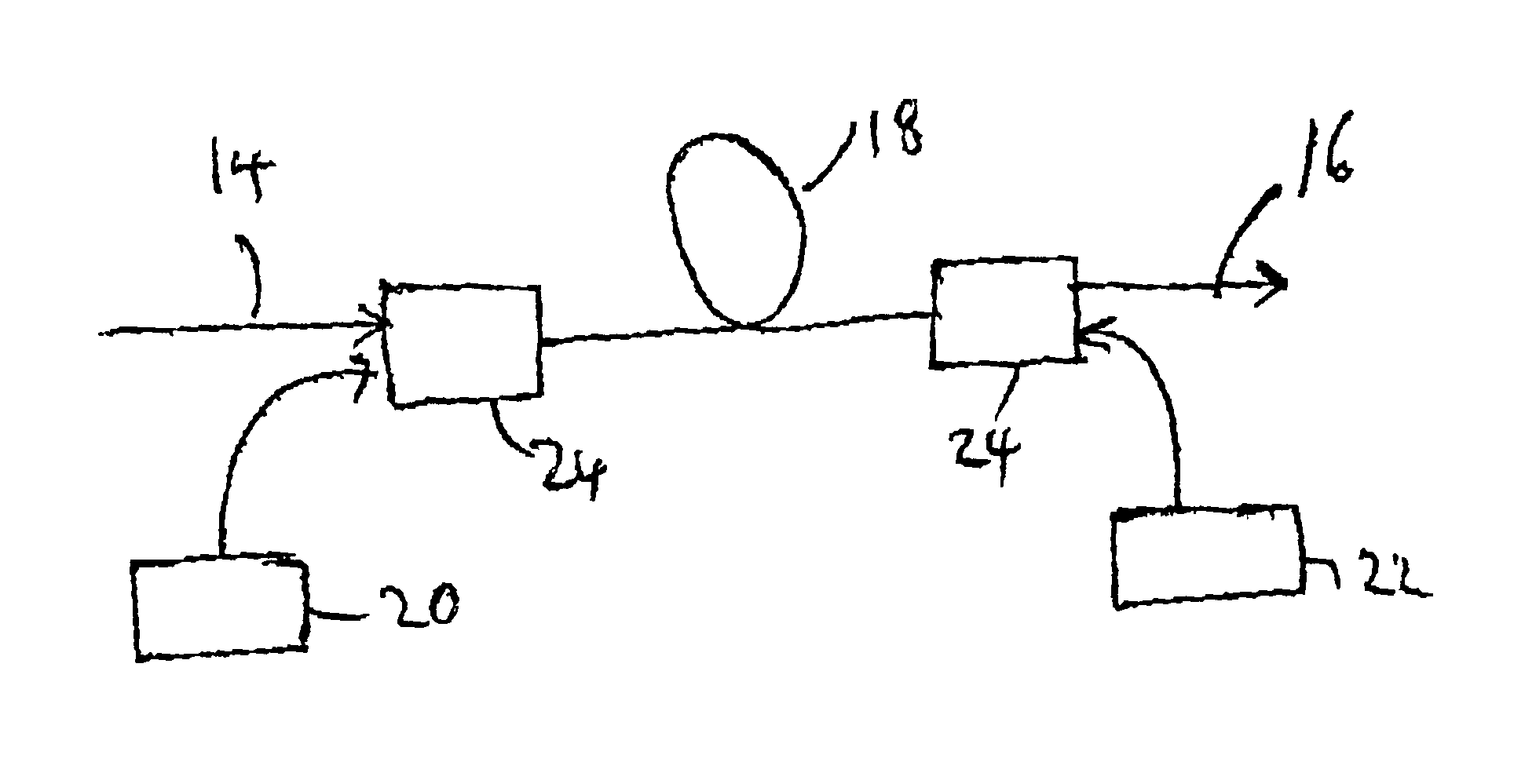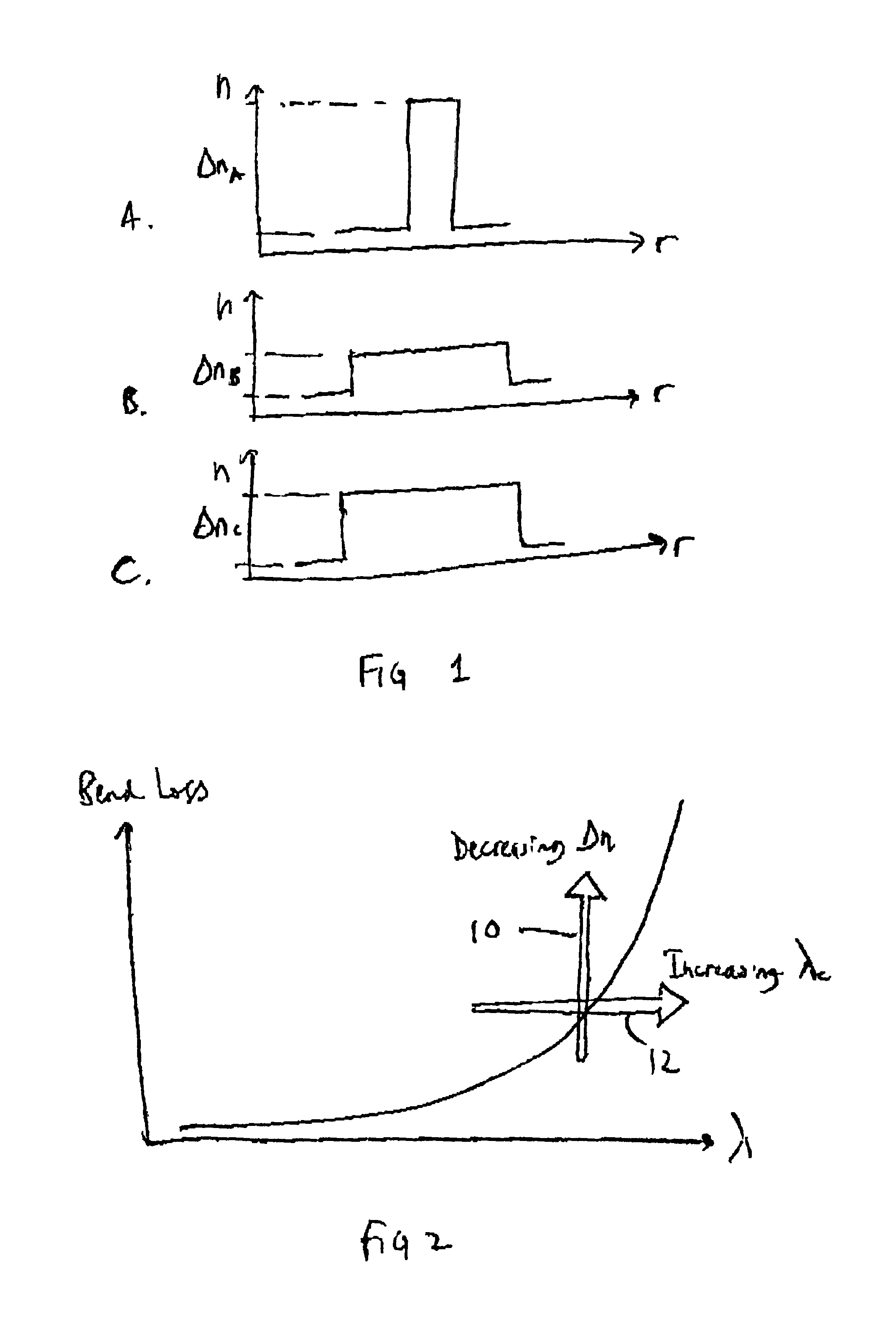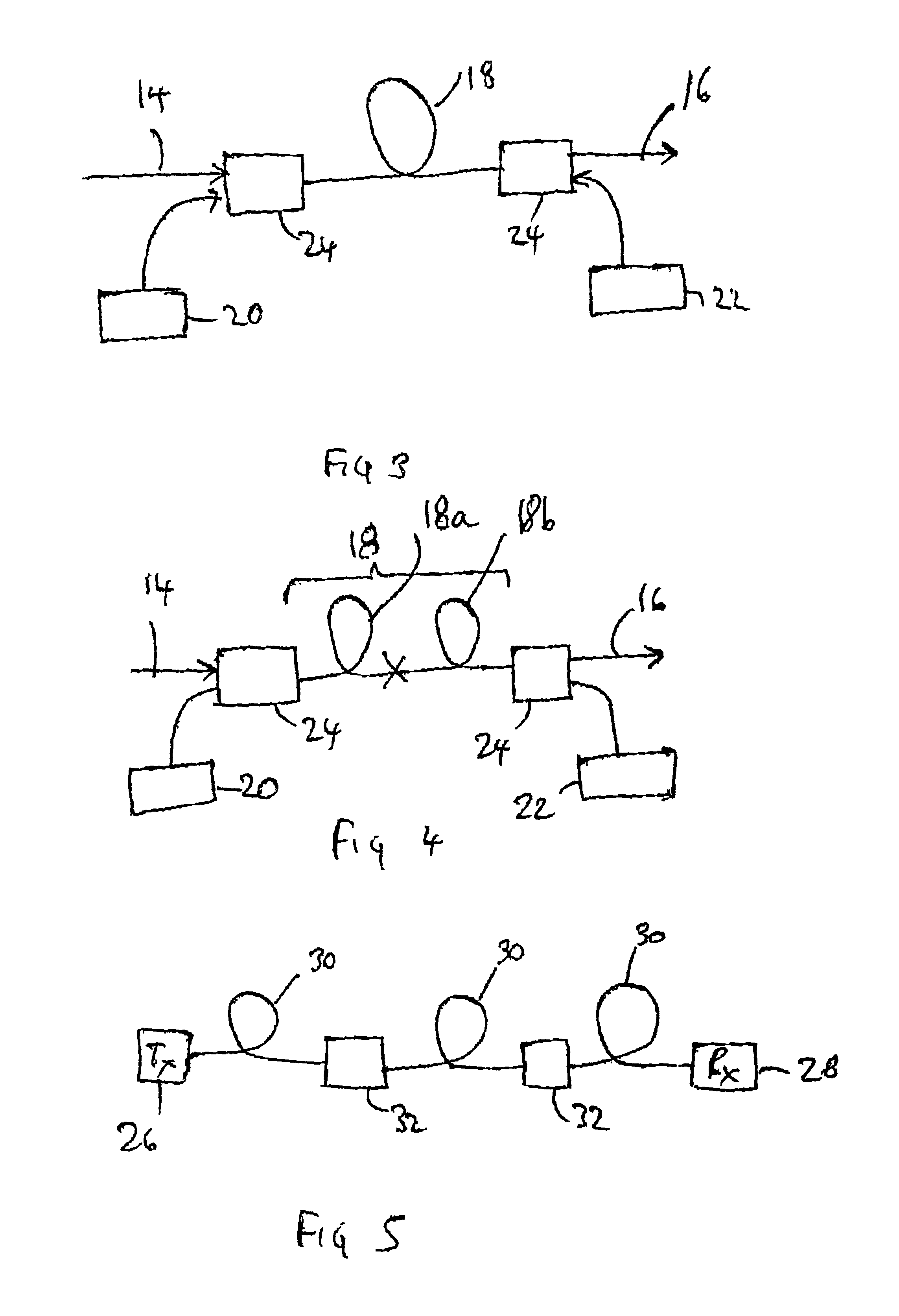Optical fiber amplifier
- Summary
- Abstract
- Description
- Claims
- Application Information
AI Technical Summary
Benefits of technology
Problems solved by technology
Method used
Image
Examples
Embodiment Construction
FIG. 1 shows schematically the refractive index profiles for various types of fiber. FIG. 1A shows the profile for conventional amplification fiber, in which a relatively narrow core is used, giving a mode field diameter of around 4 to 6 μm at 1550 nm. This gives low noise and high efficiency operation and also ensures single mode operation for the pump and signal wavelengths of interest. The small mode field diameter results in higher intensity signals which improve the efficiency of the amplifier. The fiber has a relatively high refractive index difference between the core and cladding.
An optical amplifier essentially has a high-pass filtering response, and one problem with the conventional fiber design used in optical amplifiers is that the small mode field diameter results in significant low frequency signal attenuation at high power levels, which can adversely affect low frequency signal components or low frequency channels, such as analogue maintenance channels.
One possible so...
PUM
 Login to View More
Login to View More Abstract
Description
Claims
Application Information
 Login to View More
Login to View More - R&D
- Intellectual Property
- Life Sciences
- Materials
- Tech Scout
- Unparalleled Data Quality
- Higher Quality Content
- 60% Fewer Hallucinations
Browse by: Latest US Patents, China's latest patents, Technical Efficacy Thesaurus, Application Domain, Technology Topic, Popular Technical Reports.
© 2025 PatSnap. All rights reserved.Legal|Privacy policy|Modern Slavery Act Transparency Statement|Sitemap|About US| Contact US: help@patsnap.com



